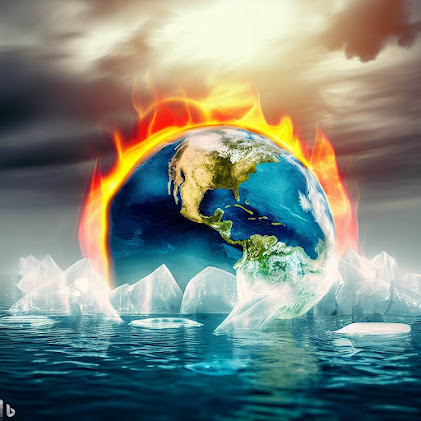Climate Changes in Growing Countries
Growing countries like India are particularly vulnerable to the impacts of climate change due to their large populations, high levels of poverty, and limited resources for adaptation. Here are some key climate change challenges and impacts specific to India:
1. Extreme Weather Events: India is experiencing an increase in the frequency and intensity of extreme weather events such as cyclones, floods, and droughts. These events disrupt agriculture, damage infrastructure, and lead to loss of life and livelihoods.
2. Water Scarcity: Climate change exacerbates water scarcity issues in India. Changing rainfall patterns, increased evaporation, and melting glaciers affect the availability and distribution of water resources. This poses significant challenges for agriculture, drinking water supply, and industrial activities.
3. Agriculture and Food Security: The agricultural sector, which employs a significant portion of India's population, is highly vulnerable to climate change. Erratic monsoon patterns, heatwaves, and increased pest and disease risks affect crop yields, threatening food security and rural livelihoods.
4. Sea-Level Rise: India has a long coastline, and rising sea levels pose a significant threat to coastal communities and infrastructure. Increased coastal erosion, saltwater intrusion into groundwater, and the risk of more frequent and severe storm surges impact agriculture, fishing, and human settlements.
5. Health Impacts: Climate change contributes to the spread of vector-borne diseases such as malaria and dengue fever. Rising temperatures also increase the risk of heat-related illnesses. These health impacts disproportionately affect vulnerable populations, particularly those in poverty.
6. Loss of Biodiversity: Climate change puts India's rich biodiversity at risk. Changing temperatures and rainfall patterns affect ecosystems, leading to habitat loss, species migration, and altered ecological dynamics. This has implications for agriculture, wildlife conservation, and ecosystem services.
7. Energy Demand and Emissions: India's growing population and increasing energy demands pose challenges for sustainable development. Balancing energy needs while reducing greenhouse gas emissions is a crucial challenge. Transitioning to renewable energy sources, improving energy efficiency, and adopting cleaner technologies are key strategies.
To address these challenges, India has taken steps to mitigate and adapt to climate change. The country has set renewable energy targets, implemented climate change policies, and participated in international climate agreements. However, sustained efforts, technological innovation, financial support, and international collaboration are necessary to effectively tackle the complex climate change issues faced by growing countries like India.



Comments
Post a Comment